Unlocking Value in Civic and Justice Design with the Three-Door Jail Concept
At NELSON Worldwide, we believe that thoughtful design choices can unlock significant value for civic and justice facilities—value that serves not only operational efficiency and cost-effectiveness but also the well-being of individuals and communities. In our Civic & Justice Studio, we are committed to creating environments that address complex social issues while delivering functional, cost-effective solutions that empower local communities.
The Issue at Hand
The mental health crisis within U.S. jails and prisons is well-documented. Studies estimate that 20% of jail inmates and 15% of state prison inmates have serious mental health conditions, making these facilities some of the largest providers of inpatient mental health care in the country. Additionally, many facilities are outdated, with the last major construction wave occurring about 30 years ago, leading to infrastructure that struggles to meet the growing needs of the inmate population.
The Three-Door Jail: A New Model for Justice Design
To address these challenges, NELSON Worldwide has developed the “Three-Door Jail” concept, pioneered by our Business Development Leader, Ken Ricci. This model represents a shift from traditional incarceration practices, integrating three strategies—Diversion, Deflection, and Detention—to create a more effective, compassionate, and economically beneficial system. By addressing the root causes of criminal behavior and tailoring responses to individual needs, the Three-Door Jail aims to reduce incarceration rates, alleviate overcrowding, and cut operational costs.
Door 1 — Diversion
Diversion focuses on redirecting individuals away from unnecessary time in custody. With facilities designed to include magistrate offices and hearing rooms on-site, the process allows for immediate redirection to community services or programs as needed. This pathway not only reduces time in jail but also connects individuals with critical resources that address underlying issues, potentially preventing further encounters with the justice system.
Door 2 — Deflection
Deflection focuses on the crucial intersection of mental health and criminal behavior. Individuals in need of a mental health evaluation can meet with caseworkers who then direct them to appropriate mental healthcare facilities. This approach ensures that those struggling with mental health issues receive the treatment they need rather than being funneled into the jail-to-prison pipeline system. By providing targeted support, Deflection lowers long-term incarceration rates and fosters a system that values treatment over punishment.
Door 3 — Detention
For those who must be held, the Detention door reimagines traditional jail spaces with design elements that promote dignity and rehabilitation. Using normative design principles, these spaces replace bars with secure glazing, incorporate natural light, and provide quality furniture, creating a more humane environment that respects the individual. Such settings are proven to contribute to better outcomes, supporting rehabilitation rather than perpetuating a cycle of incarceration.
Real-World Applications of the Three-Door Model
The Three-Door Jail concept is more than an idea; it’s a practical approach being implemented in facilities across the U.S.:
Diversion: has been a cornerstone in projects like the Montgomery County Restoration Study, which co-locates critical agencies such as Law Enforcement, Health and Human Services, and the Public Defender’s Office to facilitate immediate redirection to support services.
Deflection: This is reflected in the Master Plan for the Davidson County Sheriff’s Office, which includes a mental health facility and additional resources to meet the needs of individuals requiring care beyond incarceration.
Detention: principles were applied in the State of Hawaii’s Women’s Community Correction Center, where the design prioritizes open spaces and family visitation areas, contributing to a more rehabilitative and supportive environment for detainees.
A Future Path
The Three-Door Jail is a forward-thinking approach to justice design that directly addresses the challenges facing today’s facilities. By focusing on diversion, deflection, and a reimagined approach to detention, this model not only aims to reduce overcrowding and operational costs but also to foster a justice system that serves the public responsibly and humanely.
In a world where resources are limited and public scrutiny is high, the Three-Door Jail demonstrates that value-driven design can positively impact individuals and communities alike. Through thoughtful, evidence-based design, NELSON Worldwide is unlocking a new era of justice that supports both fiscal responsibility and the dignity of every person involved.
The Return of Hospitality: How To Retake Property Shots
While the hospitality industry resets, now is the time perfect time to show your hotel property some TLC and ensure it’s in the best shape it can be when guests return. From sanitizing to rearranging or simply taking new photos of your space, there are endless things you and your team can do so that when COVID-19 passes you’ll be booking rooms more than ever.
This week, we’re giving you all the tips and tricks on prepping, composing and capturing the best shots of your property. According to Trivago, hotels on booking websites with high-quality photos have a 63% higher click-through rate—but we know getting the perfect shot can be tricky when rooms and amenity spaces are full with guests. So, while your space is empty take advantage of the opportunity to make sure your space looks great online.
Prep The Shots
- Make a list of the shots you want to get
- Think about the time of day you will shoot
- Avoid shooting when the sun will be hitting the windows/area directly
- Clean and straighten the shot areas
- Wipe all surfaces down, sweep all the floors
- Look for glares on glass in picture frames or mirrors—close blinds or curtains to eliminate.
- Fluff up pillows and straighten and iron duvets/sheets
- Remove any extra or unsightly items (like trash cans or unapproved signage)
- BEFORE
- AFTER
- BEFORE
- AFTER
Compose Your Shots
- Turn on all the lights you can, even in adjacent areas for light spill over
- Position yourself in back corner so you can to get the widest view of the room. Shooting diagonally across the room will give a better result than shooting parallel or perpendicular to the walls.
- Take a test shot to see how everything looks and then adjust
- Adjust furniture to fill the frame of the picture, cutting down on bare areas
- Consider pulling furniture out from the edges of a room to fill the bare spots
- Or aligning/spacing furniture differently than you would when guests are around – there are no need for walkways in photos!
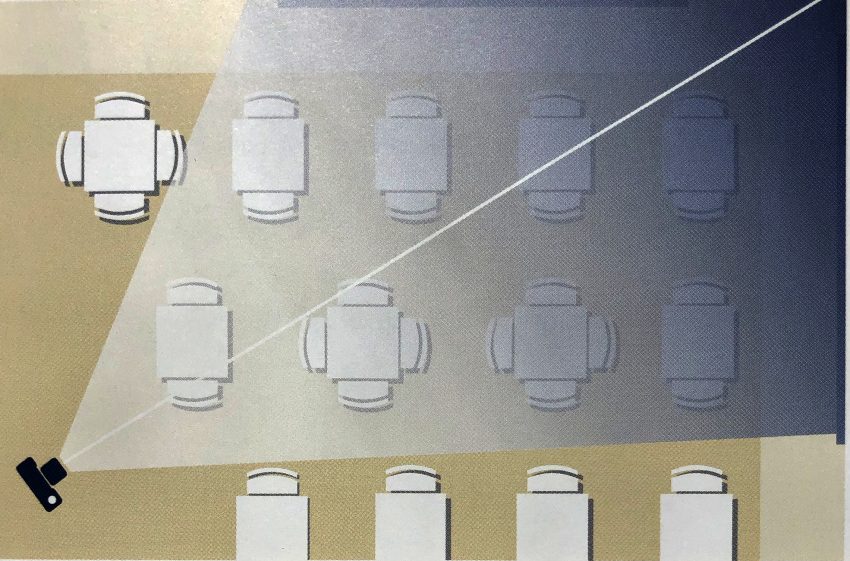
Take Your Shots
- If you have a tripod, use it! If not, try to find a table or something stable to set your camera on
- Utilize the self-timer mode—this as well will also help to stabilize the shot
Now that you’re equipped with everything you need to know about polishing up your property photos, it’s time to get those perfect shots! For more information on how-to navigate the impacts of COVID-19, visit our support and insights page here.
Trilith Live
Trilith Named Best in Atlanta Real Estate by Atlanta Business Chronicle
The Atlanta Business Chronicle has named Trilith the Real Estate Deal of the Year.
NELSON not only served as the architect of record for Trilith LIVE, we provided comprehensive architecture and interior design services for Trilith Guesthouse, a boutique hotel part of Marriott International’s Tribute Portfolio. Trilith Guesthouse opened in January with 191 hotel rooms carrying the theme of its creative surroundings. Oliver’s Twist Bar & View, giving a nod toward the classic Charles Dickens novel, is on the rooftop.
Exploring Emerging Shifts in the Legal Workplace
The world of work has undergone tremendous change in the last three years. During that time, NELSON has designed 1.5 million square feet of legal workspace for 28 different law firms. Fundamental to our approach has been asking questions that push beyond the borders of a particular project: Rather than responding solely to requests for design services, we explore firm objectives, operational methods, and culture to develop solutions that truly respond to deep organizational needs.
This has given us a unique perspective on what makes a successful legal workplace. We have distilled that knowledge into five core insights that can guide firms as they think about creating contemporary workplaces.
Insurance Provider Technology Center
The Amenity Effect: Enhancing The Shopping Experience
Amenities have a profound effect on the value of a building, and new unique experiences make a lasting impression for consumers, employees, hotel guests, and residents. Our mixed-use teammates set out to explore current and future amenity trends in our latest blog series, The Amenity Effect. Follow along as we dive deep into the environments where we work, shop, live, and thrive and take a closer look at the amenities that help make these environments flourish.
___________________________________________
After highlighting some thoughts on live and work, it’s time to unpack the play amenities that make up vibrant shopping destinations. Now more than ever, consumers are looking for a differentiated shopping experience, and amenities like ride share lounges, curbside pickup, and locally-driven food halls are replacing outdated mall offerings of the past.
Earlier this year, we set out to discover what experiential, new offerings shoppers were looking for by creating a retail amenity challenge in the absence of this year’s March Madness tournament. The top choice for 2020, a beer garden, highlighted consumers’ desires for unique food and beverage concepts that allow them to connect with friends and family, unwind, and tap into a more localized offering. When stay at home orders were lifted, people flocked to these venues, seeking that outdoor social ambiance.
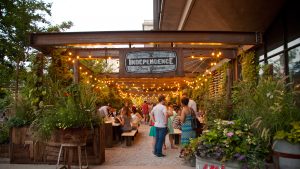
Concert venue came in at a close second, which confirms consumers’ on-going attraction to experiences over products. People are inherently drawn to music, and while it may be awhile before stadiums are selling out again, there is always a place for live music at a local shopping center.
Farmer’s market and nature trail amenities tied for third revealing consumers’ growing interest in wellness. From fresh food opportunities, to fitness, this overarching theme should continue to be a focus for every development.
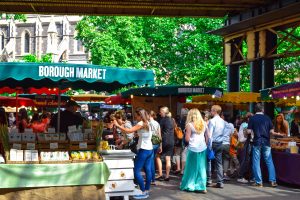
There aren’t many new malls being built, but as the big box anchors go dark and the redevelopment opportunities present themselves, we can position the right mix of amenities to enrich an existing center. NELSON works through many of these redevelopments around the country and we’re noticing that providing programming and experiences to attract and retain consumers is key.
More amenities and service offerings that enhance and bring value to a shopping destination:
- Concierge services – Providing not just valet ride share pickup areas but spaces, environments, and even lounges help improve the experience of arrival and departure from a property
- Curbside pickup and returns – Develop creative ways to utilize excess parking and retail space to set up mini distribution within shopping centers to safely and efficiently deliver merchandise to the consumer
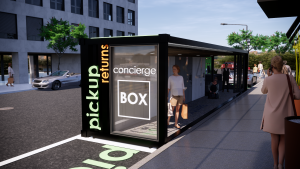
NELSON Worldwide Rendering – Pickup and Returns Concierge Box
- Hands-free shopping – Consumers shop hands-free and when they are done, arrive to a central distribution hub to gather their purchases and be on their way
- Hobby tenants –There is a place in the shopping center mix for the creative community in maker shops, places where people can come to learn how to use tools, 3D printing, computer programs and take classes to further develop their creative hobbies
- Outdoor venues – Plazas that serve up splash fountains, ice skating rinks, movies in the park, outdoor fitness, fashion shows, and artist guilds help energize a center’s value
- Patio dining – As tenants themselves seek additional outdoor dining, developers are looking for opportunities to integrate communal dining al fresco experiences
- Interactive technology – From kids play areas, to walkways and stairwells, integrating next level technology and lighting can provide for experiential exploration throughout these centers
- Crossover space/Pop-ups – Taking advantage of those in-between spaces along secondary pathways can provide opportunities for micro tenants and enhance a curated experience throughout a property
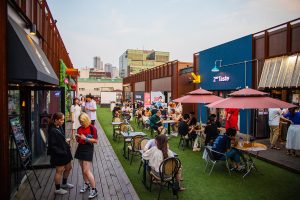
S-Factory – Seoul, South Korea
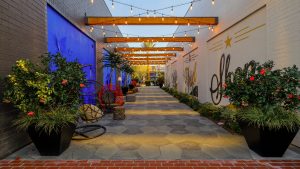
The Works – El Segundo, CA
It’s important as designers that we balance programmatic needs of the client with human nature to curate inspiring environments and experiences. Social connectivity with physical distancing may be today’s design problem, but we must plan with flexibility for a better tomorrow.
Holiday Retail Unwrapped 2021
This year, retail brands are facing new challenges as shoppers return to stores and have a new outlook on fulfilling their holiday shopping lists after the height of the pandemic. Brands must rapidly evolve to stand out among competitors by ramping up their holiday strategies both online and in-store.
This holiday season we are sharing key insights that will drive retail transformation into the new year. Download the full report today.



